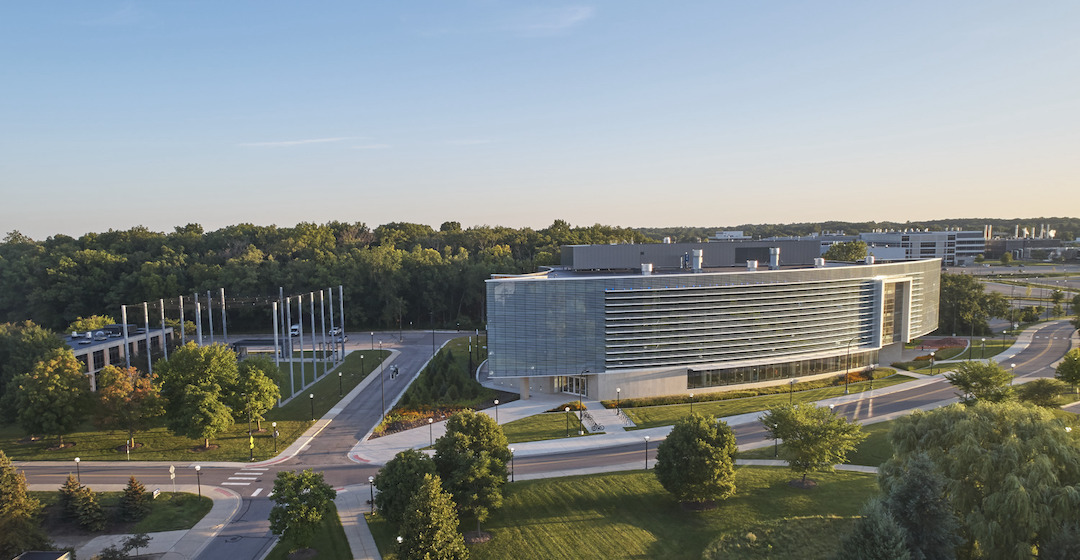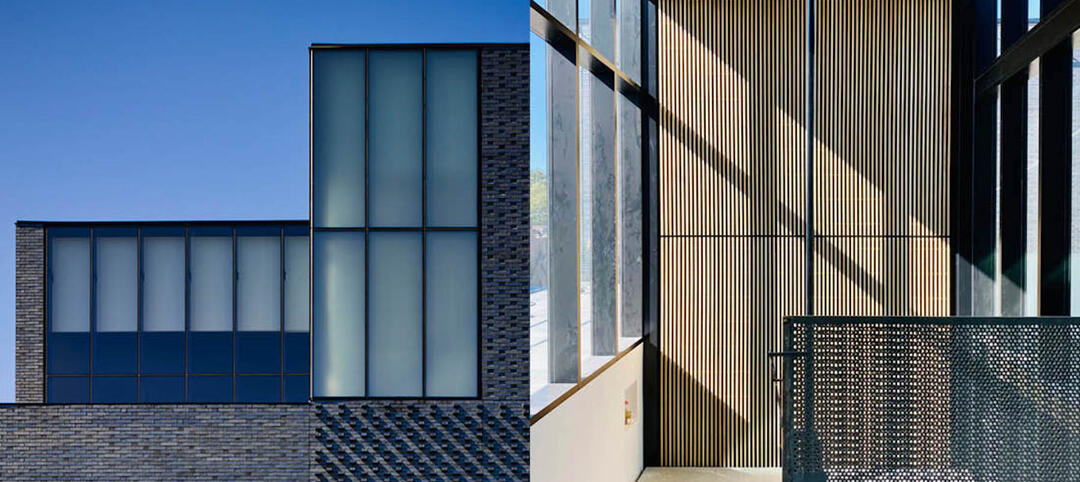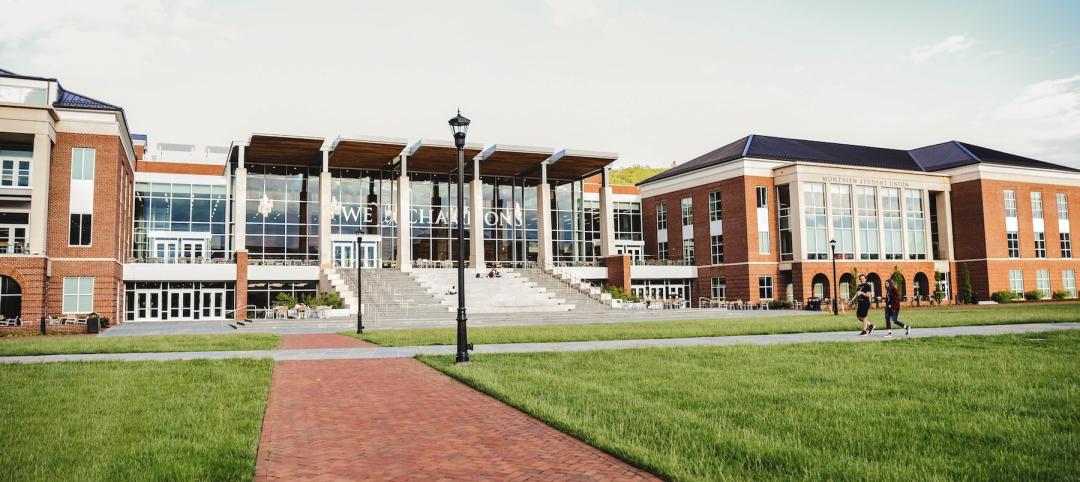The Ford Robotics Building has completed and opened on the University of Michigan (U-M) campus. The $75 million project represents a singular new home for the university’s relationship with Ford and acts as a showcase for robotics research, cross disciplinary collaboration, and innovative industry/education collaboration.
Located on the University of Michigan North Campus, the building anchors the west end of a Michigan Avenue mobility testbed that begins in Detroits Corktown neighborhood and runs through Dearborn to Ann Arbor. The four-story, 134,000-sf project is an interdisciplinary center for mathematics, engineering, and computer programming faculty and researchers. The facility will be home to researchers that were previously spread across 23 separate buildings and is also the first robotics facility to co-locate an industry team (Ford’s mobility research center) with a university’s robotics leadership.
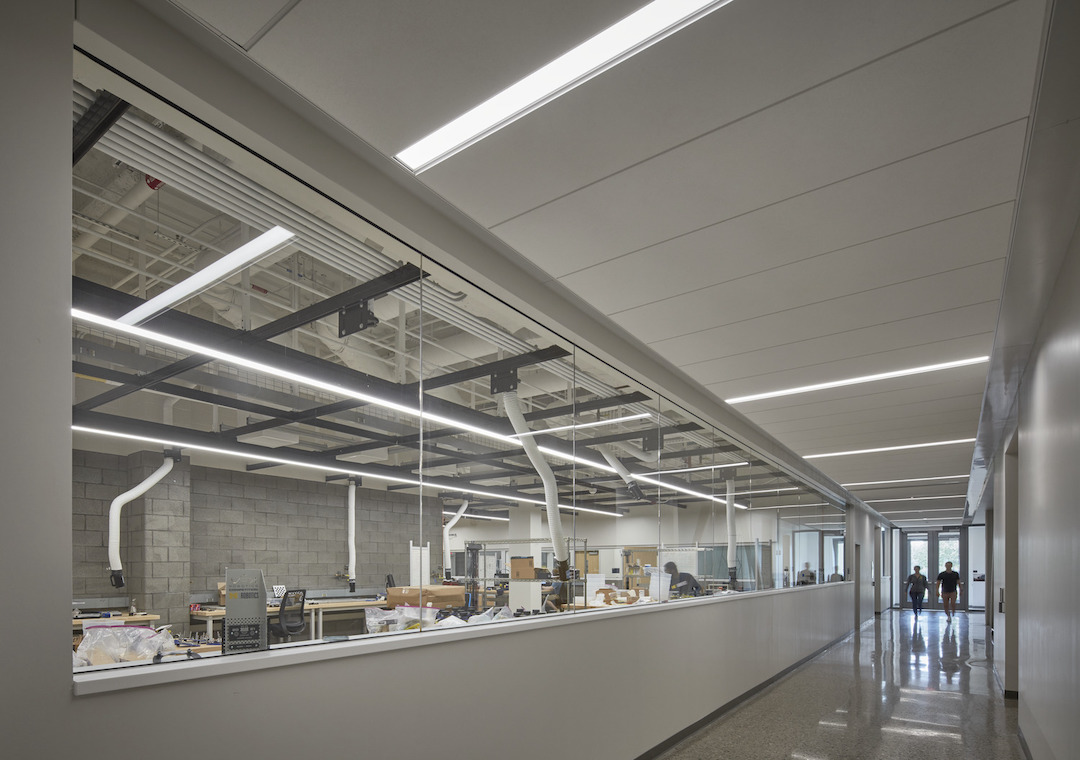
HED, in an effort to reflect a robotics program incorporates both theory and making, designed the building to appear both extroverted and enclosed simultaneously. From the outside, the most striking feature is the glass-clad facade that curves along Hayward Street. Composed of large bands of fritted glass with 30-inch-deep sunshades spaced 42 inches apart, the south-oriented glass wall allows diffused daylight deep into the building interior. The facade also allows visitors to see the activities occurring within.
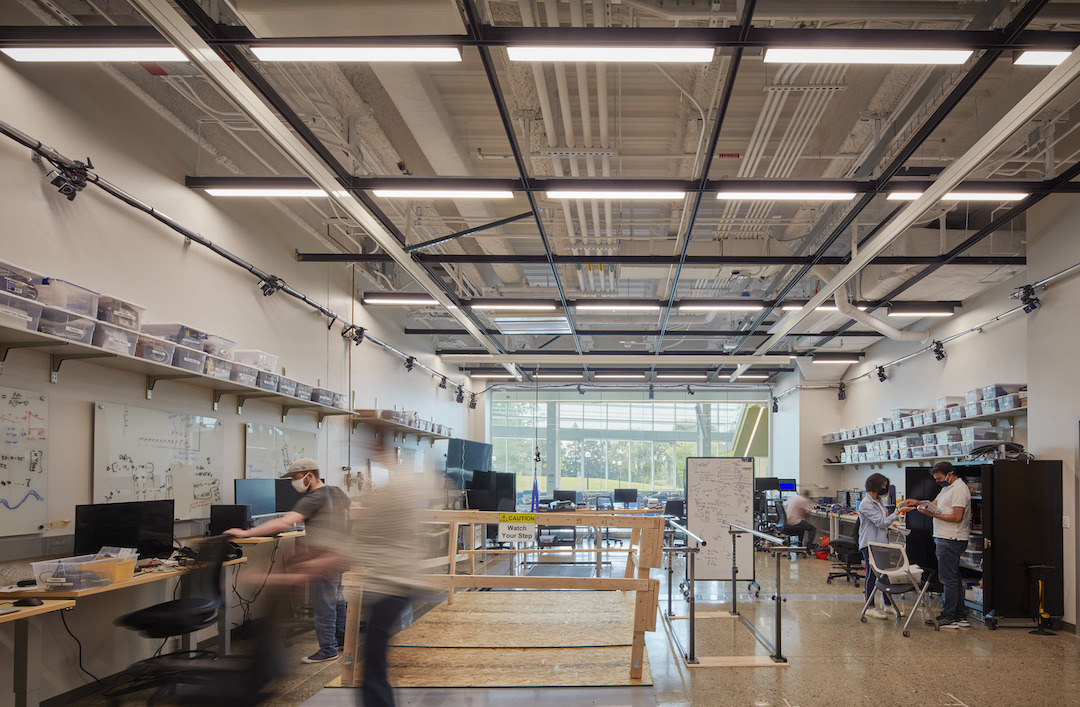
Upon entry, visitors arrive within a four-story atrium defined on one side by the curved smooth-facing glass wall and balconies for the top three floors. The atrium is designed for a wide variety of uses and special events with a cafe, large-scale video screen, and a sophisticated sound system. The atrium is heated through displacement ventilation. Researchers all enter the labs via a shared team collaboration space, ensuring chance encounters, interaction, and collaboration between them.
HED designed the Ford Robotics Building to promote proximity and spontaneous interaction between students, faculty, researchers, and visiting industry professionals. The building includes the new hub of the U-M Robotics Institute on the first three floors and Ford’s robotic and mobility research lab on the fourth floor.
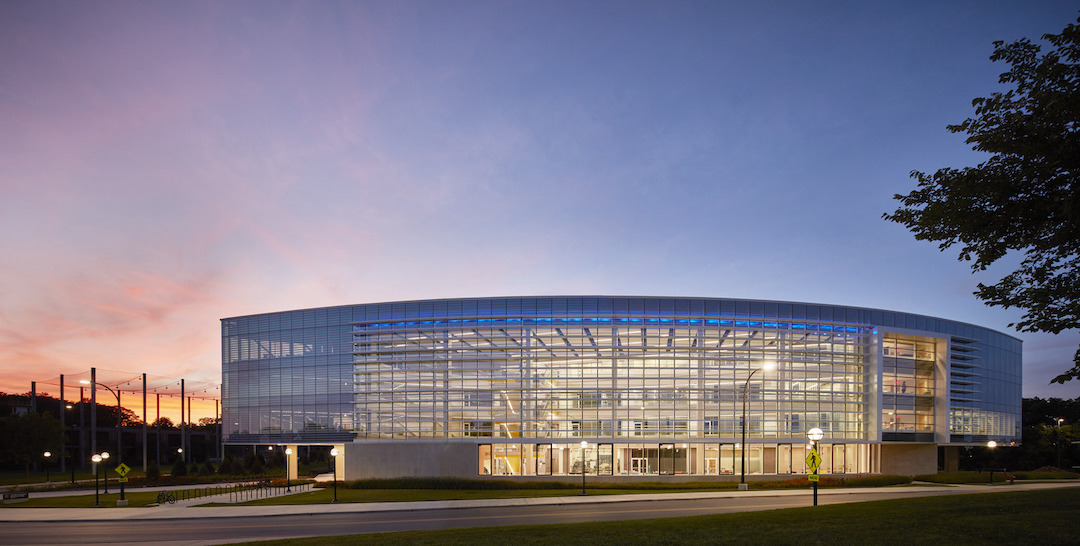
The custom U-M research labs are designed for robots that fly, walk, roll, and augment the human body. Multiple labs are incorporated within the building, including the Ronald D. And Regina C. McNeil Walking Robotics Laboratory for developing and testing legged robots. This specific lab has an in-ground treadmill that can hit 31 mph and a 20% grade, as well as carry obstacles to test walking robots that could aid in disaster relief and lead to better prosthetics and exoskeletons. A rehabilitation lab is designed for advanced prosthetics and robotic controls with a movable “earthquake platform” that can tilt in any direction while force-feedback plates measure ground contact.
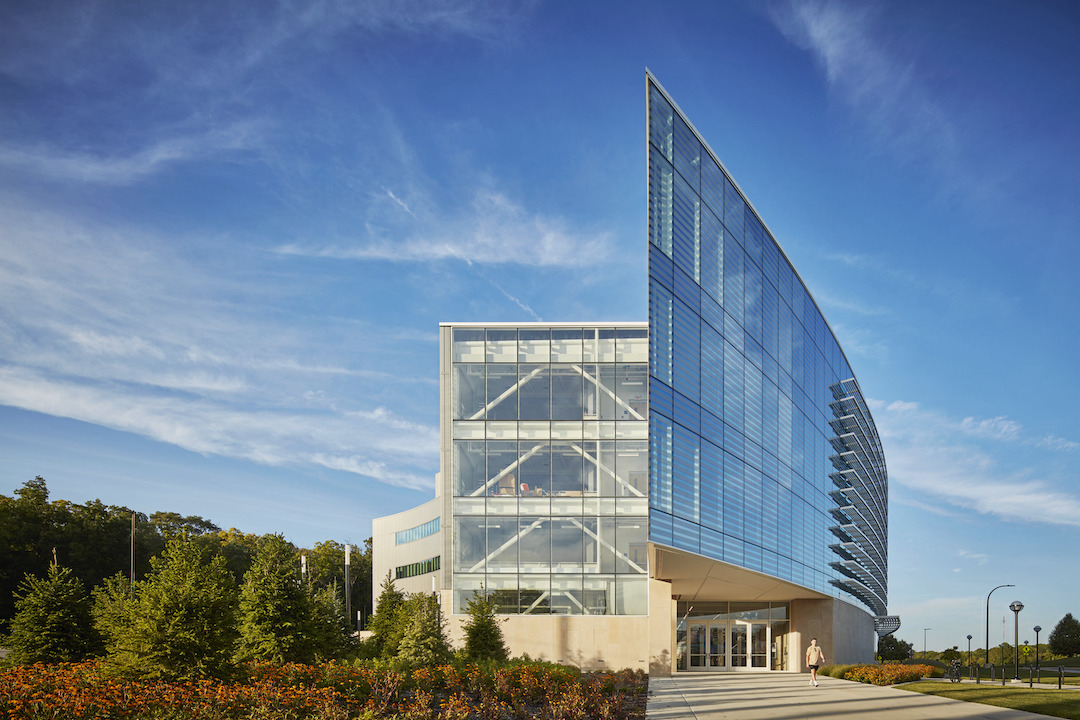
A three-story fly zone allows for the testing of drones and other autonomous aerial vehicles indoors. An outdoor Mars yard was designed with input from planetary scientists at U-M and NASA to enable researchers and student teams to test rover and lander concepts on a landscape that mimics the Martian surface. An AI-designed “robot playground” outdoor obstacle course is designed for testing robots on stairs, rocks, and water surrounded by motion capture cameras. A high-bar garage space for self-driving cars allows for teams to test connected and automated vehicles in urban and suburban environments. Ford roboticists occupy the building’s fourth floor research lab and offices.
The Ford Robotics Building is expected to achieve LEED Gold certification. HED provided architecture, landscape architecture, interior design, and structural, mechanical, and electrical engineering services on the project.
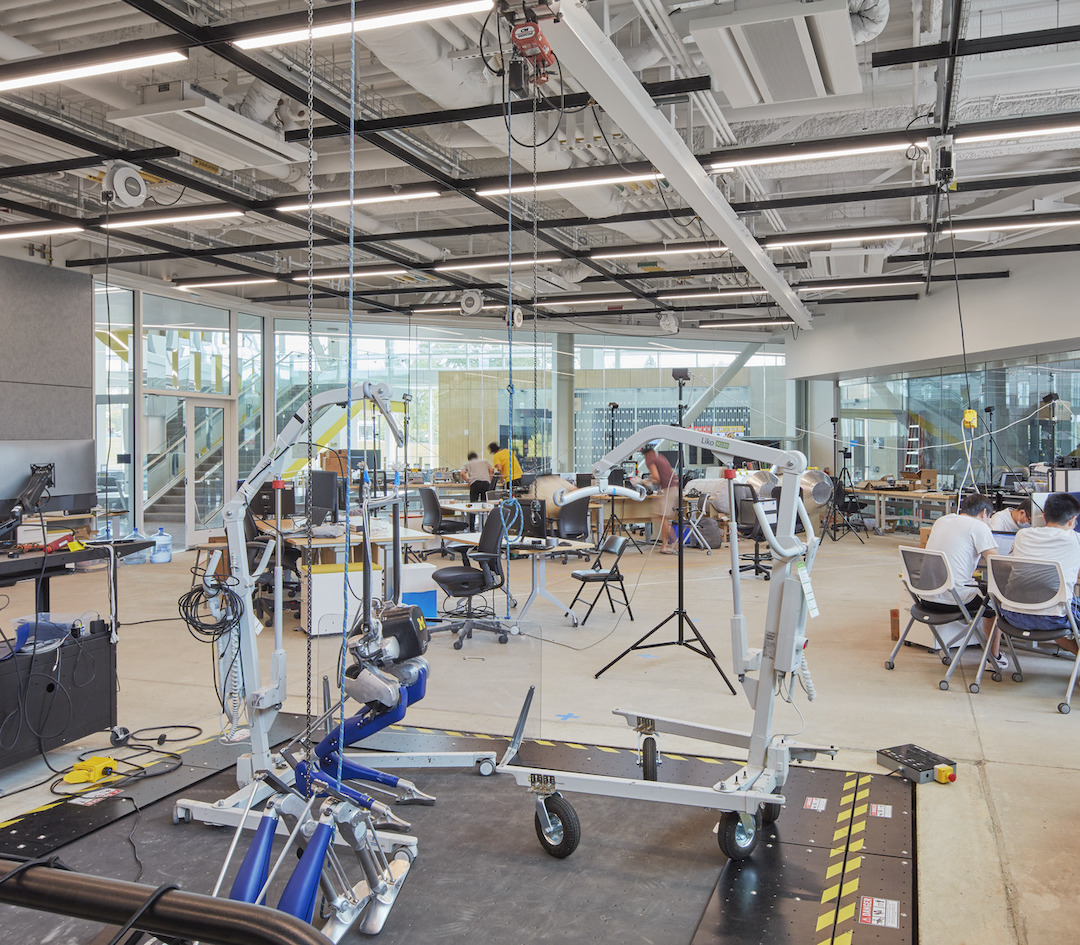
Related Stories
| Sep 2, 2022
New UMass Medical School building enables expanded medical class sizes, research labs
A new nine-story, 350,000 sf biomedical research and education facility under construction at the University of Massachusetts Chan Medical School in Worcester, Mass., will accommodate larger class sizes and extensive lab space.
| Sep 1, 2022
The University of Iowa opens the new Stanley Museum of Art, a public museum for both discovering and teaching art
The University of Iowa recently completed its new Stanley Museum of Art, a public teaching museum designed by BNIM.
University Buildings | Aug 25, 2022
Higher education, striving for ‘normal’ again, puts student needs at the center of project planning
Sustainability and design flexibility are what higher education clients are seeking consistently, according to the dozen AEC Giants contacted for this article. “University campuses across North America are commissioning new construction projects designed to make existing buildings and energy systems more sustainable, and are building new flexible learning space that bridge the gap between remote and in-person learning,” say Patrick McCafferty, Arup’s Education Business Leader–Americas East region, and Matt Humphries, Education Business Leader in Canada region.
Giants 400 | Aug 22, 2022
Top 90 University Contractors and Construction Management Firms for 2022
Turner Construction, Whiting-Turner Contracting, PCL Construction Enterprises, and DPR Construction lead the ranking of the nation's largest university sector contractors and construction management (CM) firms, as reported in Building Design+Construction's 2022 Giants 400 Report.
Giants 400 | Aug 22, 2022
Top 85 University Engineering + EA Firms for 2022
AECOM, Jacobs, Salas O'Brien, and IMEG head the ranking of the nation's largest university sector engineering and engineering/architecture (EA) firms, as reported in Building Design+Construction's 2022 Giants 400 Report.
Giants 400 | Aug 22, 2022
Top 150 University Architecture + AE Firms for 2022
Gensler, CannonDesign, SmithGroup, and Perkins and Will top the ranking of the nation's largest university sector architecture and architecture/engineering (AE) firms, as reported in Building Design+Construction's 2022 Giants 400 Report.
Giants 400 | Aug 22, 2022
Top 90 Construction Management Firms for 2022
CBRE, Alfa Tech, Jacobs, and Hill International head the rankings of the nation's largest construction management (as agent) and program/project management firms for nonresidential and multifamily buildings work, as reported in Building Design+Construction's 2022 Giants 400 Report.
Giants 400 | Aug 22, 2022
Top 200 Contractors for 2022
Turner Construction, STO Building Group, Whiting-Turner, and DPR Construction top the ranking of the nation's largest general contractors, CM at risk firms, and design-builders for nonresidential buildings and multifamily buildings work, as reported in Building Design+Construction's 2022 Giants 400 Report.
Giants 400 | Aug 22, 2022
Top 45 Engineering Architecture Firms for 2022
Jacobs, AECOM, WSP, and Burns & McDonnell top the rankings of the nation's largest engineering architecture (EA) firms for nonresidential buildings and multifamily buildings work, as reported in Building Design+Construction's 2022 Giants 400 Report.
Giants 400 | Aug 22, 2022
Top 80 Engineering Firms for 2022
Kimley-Horn, Tetra Tech, Langan, and NV5 head the rankings of the nation's largest engineering firms for nonresidential buildings and multifamily buildings work, as reported in Building Design+Construction's 2022 Giants 400 Report.


